A Guide to Ziyarat in Madinah – Must-Visit Sacred Sites
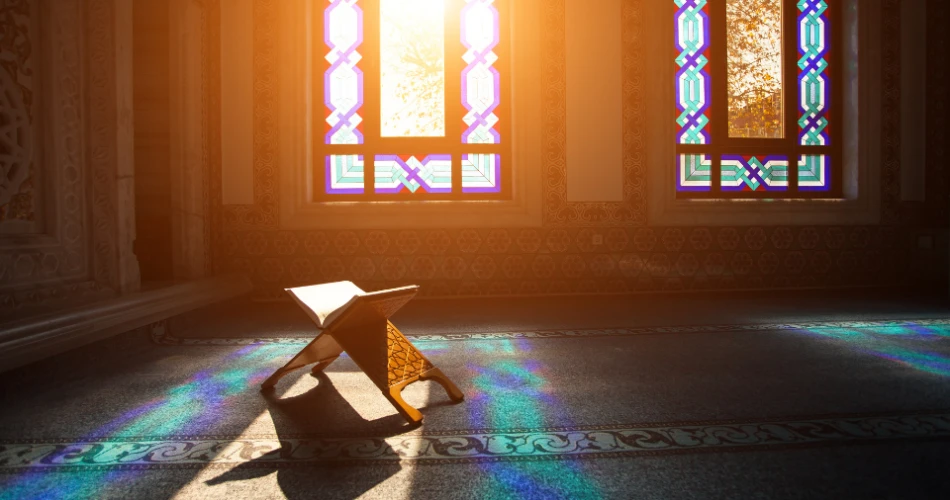
Going for ziyarat in madina? Must visit these sacred Islamic sites to fully absorb the spirituality!
Our hearts long for a journey that can enrich our souls, refresh our faith, and bring us closer to Allah. One such sacred destination is the city of Madinah, which holds immense significance in Islamic history. It was here that Prophet Muhammad (SAW) migrated from Makkah and established the first Islamic state. This holy city serves as a beacon of light for all believers, and a visit here is considered meritorious in our religion. One of the most significant aspects of visiting Madinah is performing Ziyarat (visitation) to its sacred sites, which allows us to immerse ourselves in the city's rich Islamic heritage.
In this comprehensive guide, we will explore the concept of Ziyarat and highlight some of the must-visit sacred places to visit in Medina that you should include in your itinerary.
What is Ziyarat?
Ziyarat, a term derived from the Arabic word "zur," meaning "to visit," refers to the act of visiting and paying respects to places with religious significance. In Islam, Ziyarat holds immense spiritual importance as it allows believers to connect with their faith and strengthen their relationship with Allah. It is also considered a way of seeking blessings, forgiveness, and guidance from Allah.
Places to Visit in Madinah:
When it comes to Ziyarat in Medina, there are several sacred sites that hold immense significance in Islamic history. These places serve as a reminder of the Prophet's (SAW) life and teachings, as well as the struggles faced by early Muslims in establishing Islam. Here are some sacred places to visit in Medina that you should include in your Ziyarat itinerary
Masjid al-Nabawi
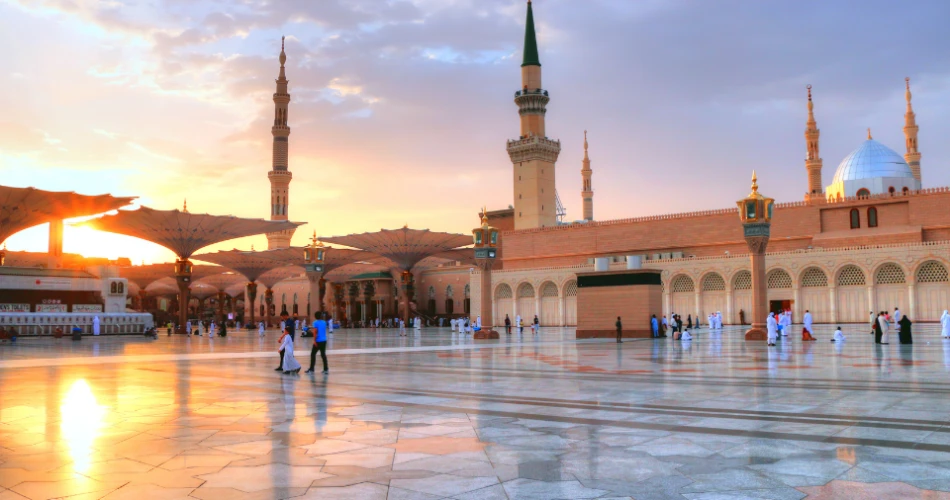
Address: Prophet's Mosque, Al Haram, Medina 42311
One of the most important sites to visit in Madinah is Masjid al-Nabawi, also known as the Prophet's Mosque. It was established by Prophet Muhammad (SAW) and served as his place of worship after migrating from Makkah. This mosque holds immense spiritual significance since it is the final resting place of the Prophet (SAW), as well as his closest companions, Abu Bakr and Umar (RA).
The mosque's distinctive features include its green dome, which marks the location of the Prophet's tomb, and the beautiful Riyad al-Jannah (Garden of Paradise) area. It is also home to the famous Rawdah area, a small piece of heaven on earth where it's believed that prayers are readily accepted by Allah.
Masjid Quba
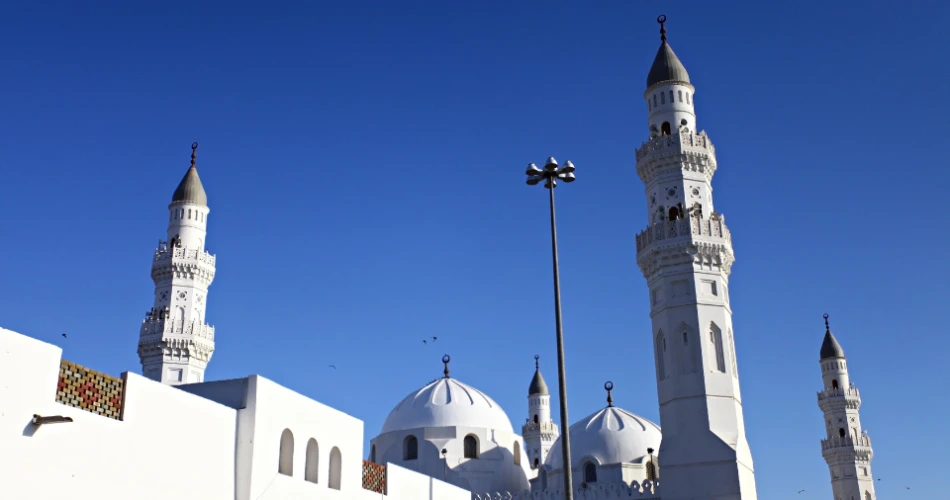
Address: Al Qubah Ash Sharqiyah, Medina 42311
Masjid Quba is the first mosque built in Islam and holds immense significance as it was the place where Prophet Muhammad (SAW) first prayed after migrating to Madinah. It's also known as the "mosque of purity" since it was built on a land purified by the Prophet (SAW) himself. Visiting this mosque is considered highly meritorious, and it's recommended to perform two rakats of prayer upon entering. Surrounded by serene green gardens, Masjid al Quba is a center of community and spiritual activities, including educational programs, Quran classes, and Islamic lectures.
Jannat al Baqi Cemetery
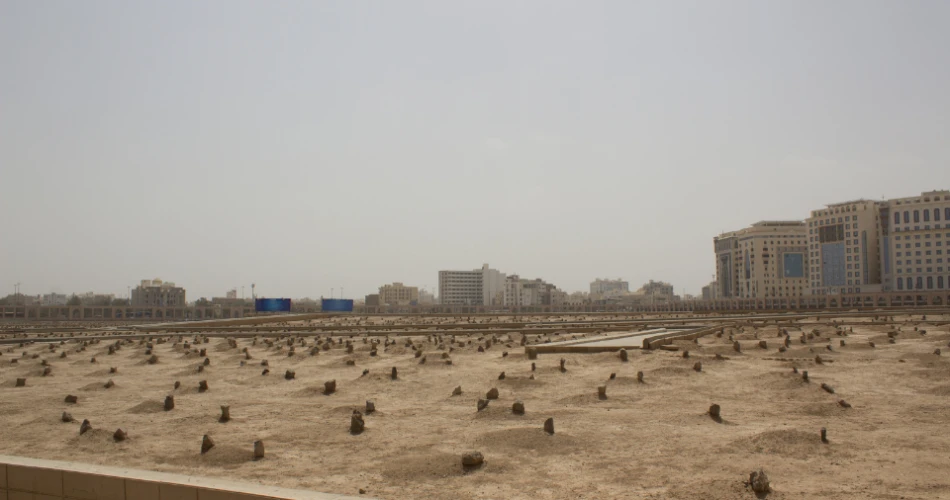
Address: Medinah, Saudi Arabia
Ziyarat in Madina cannot be completed without visiting Jannat al Baqi, also known as the Garden of Paradise. The Baqi Cemetery, Jannat al Baqi is a significant burial ground for many of the Prophet's (SAW) relatives and companions. It holds immense spiritual significance and offers visitors an opportunity to pay respects to these honorable personalities who contributed significantly to Islam's early history. It's recommended to recite the Quran and offer prayers for the deceased while visiting this holy site.
The site also offers a sobering reminder of the transience of life and serves as a place for reflection on the hereafter.
Mount Uhud
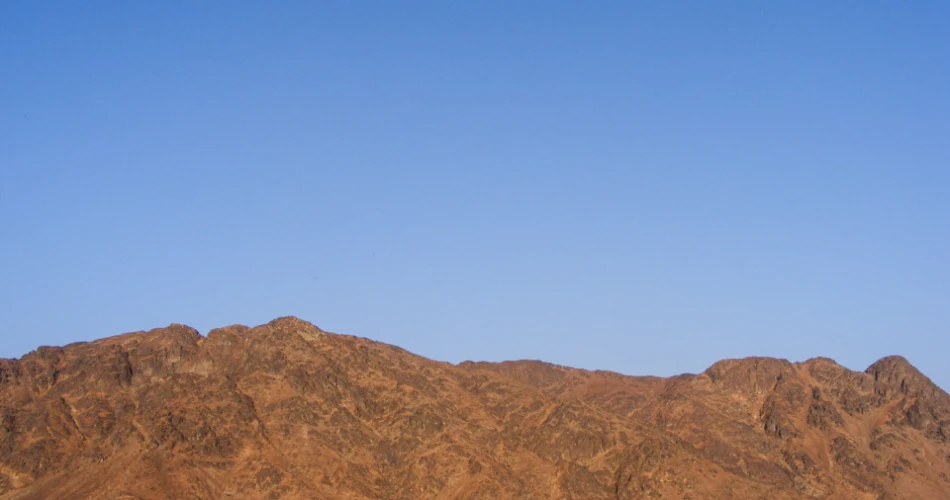
Address: Mount Uhud, Al Haram, Medina 42311
Mount Uhud, located in the north of Madinah, Saudi Arabia, is an important mountain in Islam, known for its historical significance and distinctive features. It stands 1,077 meters high and stretches 7.5 kilometers wide. The mountain is famous for the Battle of Uhud, a key event in Islamic history. It contains the graves of martyred companions, including Musab bin Omair and Hamza bin Abdul Muttalib, making it a significant site for reflection and pilgrimage. The geological composition of Mount Uhud includes volcanic rocks and natural cavities that capture rainwater, adding to its unique landscape.
Masjid Al Qiblatain
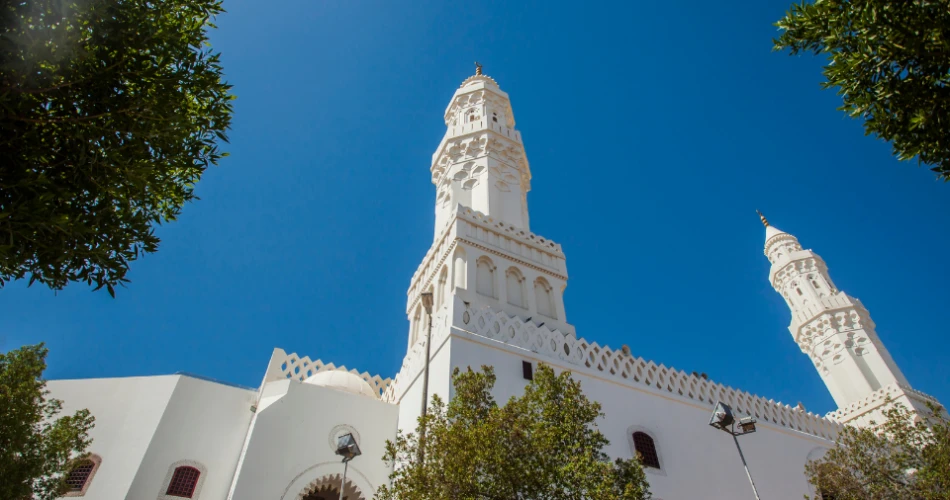
Address: Al Qiblatain Mosque, 31311 Madinah, Saudi Arabia
Masjid Al Qiblatain is another essential site to visit in Madinah, known for its historical and religious significance. It was here that Allah commanded Prophet Muhammad (SAW) to change the direction of prayer from Jerusalem to Makkah, making it the second mosque built in Islam. The mosque's distinctive feature lies in its two mihrabs, or prayer niches, facing both Makkah and Jerusalem. It serves as a reminder of the Prophet's (SAW) obedience to Allah's commands and the importance of unity in the Islamic faith.
Masjid Abu Bakr
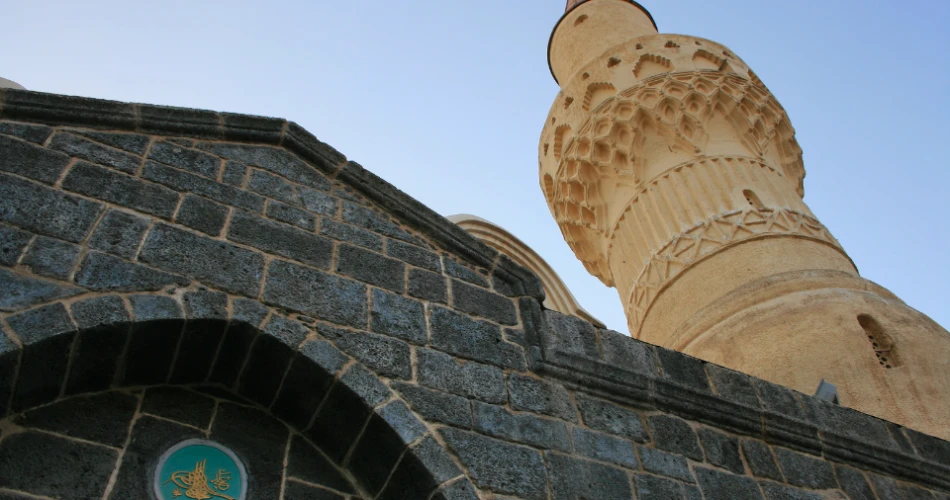
Address: 15th Street, Al-Madinah Al Munawwarah, Medina 42311, Saudi Arabia
Masjid Abu Bakr is another sacred site in Madinah that holds immense significance in Islamic history. It was built on the site where Abu Bakr (RA), the first caliph of Islam and a close companion of the Prophet (SAW), offered his prayers during the Prophet's (SAW) lifetime. It's also believed that this is the place where the famous incident of Abu Bakr leading prayers while the Prophet (SAW) was sick, occurred. Visiting this mosque allows believers to pay their respects to one of Islam's most beloved figures and learn more about his life and contributions to our faith.
This mosque, constructed during the era of Omar Bin Abdul Aziz and renovated in 1838 CE by Sultan Mahmoud II, showcases square-shaped architecture with black basalt stones. It features a white interior, a 15-meter-high minaret, a 6-meter wide and 13-meter-long rectangular courtyard, and a 12-meter high ornate dome, resembling the Bab as-Salam Minaret of Masjid Nabawi.
Bab as Salaam
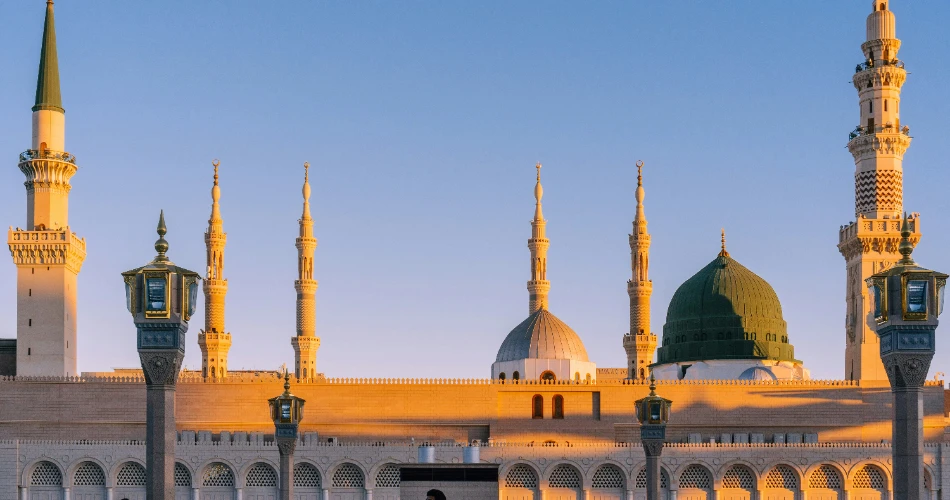
Address: 15th Street, Al-Madinah Al Munawwarah, Medina 42311, Saudi Arabia
The Bab as-Salam, also known as the Gate of Peace, is a significant entrance of Masjid al-Nabawi in Medina, Saudi Arabia. Originally constructed by Caliph Omar around 640 CE, it has been rebuilt multiple times and is no longer in its original position. This gate is a major entrance to Masjid al-Nabawi, located on the western side, aligning with the Rawda e Rasool. Its design includes a single-arched gate with decorative arches and inscriptions of Quranic verses, names of Allah, and Prophet Muhammad.
it's also believed that the Prophet (SAW) would enter Jannah through this gate on the Day of Judgement, making it a highly revered site for believers. Visitors can offer prayers and recite supplications at this gate while reflecting on the Prophet's (SAW) life and teachings.
Battlefield of the Trench (Khandaq)
Address: Khandaq, Medina 42321, Saudi Arabia
The Battlefield of the Trench holds significant historical significance in Islamic history. It was the site where the Battle of Khandaq took place in 627 CE between the Muslim community and invading forces from Mecca. The Prophet (SAW) implemented a strategic tactic of digging a trench around Madinah to protect the city from the enemy's attack, leading to a victory for the Muslims. This event showcases the power of faith and unity, and visiting this site allows believers to reflect on its lessons and apply them in their lives.
The unique feature of this site is the preserved trench, measuring 7 meters wide and 5 meters deep, which serves as a reminder of the bravery and sacrifices made by early Muslims for their faith.
Masjid Ghamama
Address: 15th Street, Al-Madinah Al Munawwarah, Medina 42311, Saudi Arabia
Masjid Ghamama, also known as Masjid al-Eid (the mosque of the Eid), is a historical and sacred site located in Madinah. It's the place where Prophet Muhammad (SAW) performed Eid prayers after completing his final pilgrimage. This mosque was built to commemorate this event and serves as a significant landmark in Islamic history.
The mosque features a unique dome structure with blue tiles and minarets that resemble those of Masjid Nabawi. It's also believed that this is the same location where the Prophet (SAW) prayed for rain, which Allah granted as a blessing for the believers. Visiting this site allows believers to witness the beauty of Islamic architecture and remember the important events in our faith's history.
Bir Shifa
Address: Bir Shifa, Al-Madinah Al Munawwarah, Medina Saudi Arabia
One of the most common places to visit in Madina Saudia Arabia is Bir Shifa, also known as the Well of Healing or Zamzam al-Salih. It's believed that this is where Prophet Muhammad (SAW) performed ablution during his last illness and used it to heal himself. It's also believed that the water of this well has healing properties, and many believers come to drink it for spiritual and physical healing.
The well is surrounded by a mosque and a small garden, providing a peaceful and serene atmosphere for visitors. Many people visit this site to seek blessings from Allah and remember the Prophet's (SAW) last days on earth. Drinking from the well and offering prayers at this site is a powerful reminder of Allah's mercy and blessings for His believers.
Wadi e Jinn
Address: Wadi e Jinn, Madinah 54924, Saudi Arabia
Wadi e Jinn, also known as the Valley of the Genies or Spirits, is a famous valley located near Masjid Nabawi in Madinah. It's believed that this valley has mystical powers and houses unseen creatures like jinns (spirits) who are believed to live here. The name of the valley comes from a famous incident where Prophet Muhammad (SAW) recited Quranic verses in this valley, and people could hear them being spoken by unseen beings.
Visiting this site allows believers to reflect on the unseen world and remember that Allah's creation is beyond our understanding. It's also a reminder to seek protection and guidance from Allah against unseen forces by reciting Quranic verses and supplications. The valley also offers beautiful views of nature, making it a peaceful spot for reflection and connecting with one's faith.
What to do in Madinah?
Besides visiting these historical and sacred sites, there are numerous other things to do in Madinah. Some popular activities include:
- Visiting the bustling local markets and trying out delicious traditional food.
- Take a tour of the old city.
- Exploring the greenery and natural beauty of Wadi e Al-Baida (The White Valley).
- Learning about the rich history and culture of Madinah at the Dar Al Madinah Museum.
- Participating in spiritual gatherings, such as Dhikr circles and lectures by renowned scholars.
In a nutshell, Madinah is a city filled with blessings, history, and spirituality. It's a place where believers can deepen their connection with Allah and His messenger and reflect on the teachings of Islam. Visiting these sites and partaking in various activities can be a transformative experience for any believer, reminding them of the importance of faith, unity, and seeking knowledge. So, if you ever get the chance to visit Madinah, make sure to explore its beauty and history while also taking time for spiritual reflection and growth. May Allah bless us all with the opportunity to visit this blessed city and gain its countless blessings.




